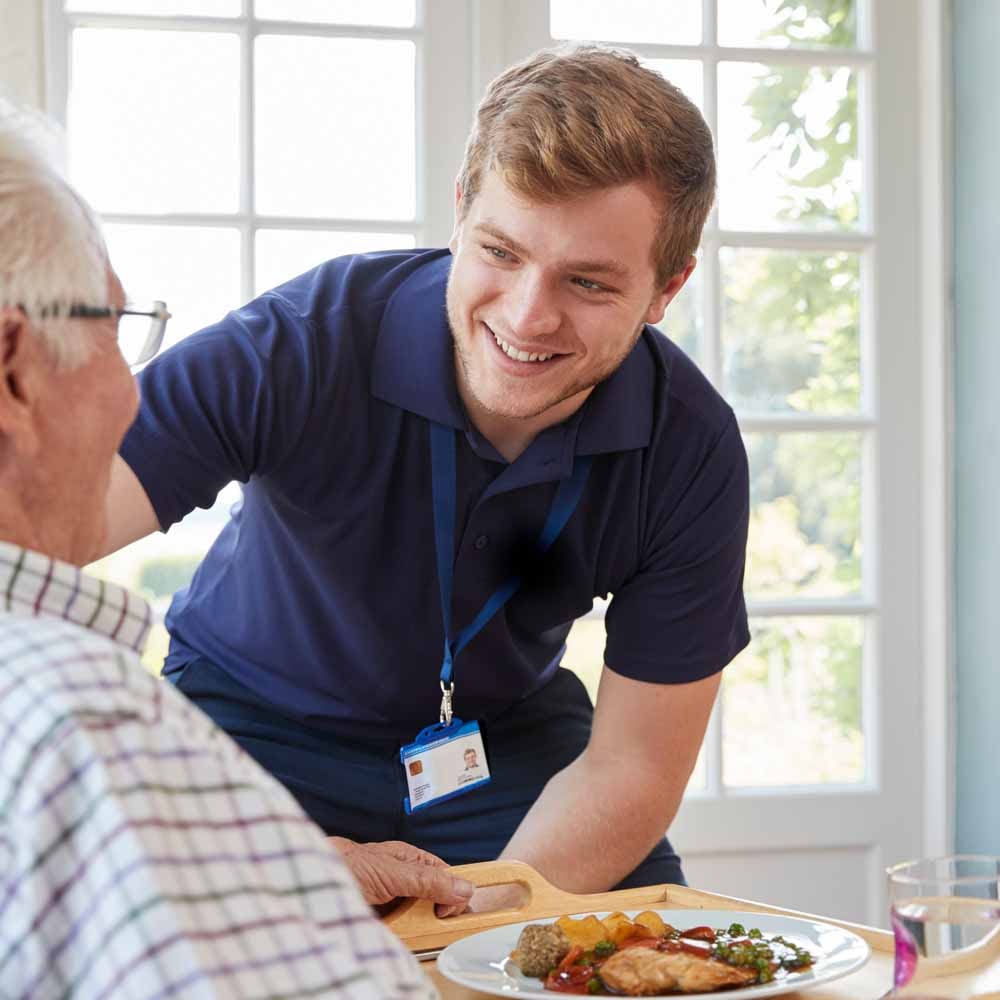In this overview, we’ll highlight the three most important laundry equipment guidelines for care homes. We understand how important it is for you to meet the key regulations and government standards when it comes to your commercial laundry process. That’s why this guide is here to help you not only meet regulation guidelines, but also provide the best services for your residents.
Need help with your laundry? Request a call back from our care homes team.
Focus #1: CQC Inspections
The Care Quality Commission (CQC) is an independent regulator established by the Health and Social Care Act 2008. They are responsible for inspecting care homes across the UK and play a vital role in the development of regulations for care, which include best practices in your laundry room.
Key CQC Laundry Guidelines For Care Homes
When inspecting your care home, the CQC expects to see a safe and sanitary environment with healthy and happy residents. They also apply the Health Technical Memoranda 01-04 for laundry disinfection, which we’ll go into later on in the guide.
Top tips for staying CQC compliant:
- Focus on the five key questions the CQC always ask themselves during inspections: Is the home well-led? Is the home safe? Is the home effective? Is the home caring? Is the home responsive?
- Make following care home laundry guidelines a priority in your laundry rooms (see HTM 01-04 below)
- CQC representatives can arrive unannounced – be sure that you are always inspection-ready
Focus #2: HTM 01-04
The Department of Health’s Health Technical Memorandum (HTM) 01-04 provides guidelines for the disinfection of linens in care homes.
Download a copy of the HTM-01-04 regulations.
Key HTM 01-04 Laundry Guidelines For Care Homes
Current laundry equipment guidelines for care homes state that disinfection must be achieved in every wash cycle. There are two accepted methods – thermal or chemical disinfection.
Thermal disinfection
Water in your laundry cycles should reach a temperature at or above 65°C for no less than 18 minutes, or 71°C for no less than 11 minutes (including mixing time).
Chemical disinfection
You’ll need to use a method, such as ozone laundry disinfection, that is validated and is as effective as thermal disinfection. These processes prevent the spread of micro-organisms like MRSA and C.diff, which can threaten residents’ health.
The JLA alternative: ozone disinfection
Unique to us: OTEX ozone disinfection provides a verifiable way to meet HTM 01-04. Our OTEX ozone disinfection solution harnesses the natural power of ozone O3, killing bacteria, moulds, yeasts and viruses and eliminating the risk of cross-infection in laundry. Learn more about our ozone washer system here.
What happens if my home isn’t HTM 01-04 compliant?
We understand the importance of being HTM 01-04 compliant. It’s possible that, if you’re care home isn’t meeting the HTM 01-04 standards, it could be placed into special measures or even shut down. If an inspection finds that you aren’t meeting the HTM 01-04 standards and a resident or staff member has been harmed because of this, it’s possible that, in extreme cases, the CQC can bring prosecution against you. We’re here to make sure that your commercial laundry equipment is always compliant with the latest regulations.
Top tips for HTM 01-04 compliance:
- Ensure that every load of laundry is thoroughly disinfected according to relevant care home laundry guidelines
- Establish routes for the transportation of soiled items, from collection to washing and storage, in order to prevent cross-contamination
- Ensure staff are adequately trained in thermal and chemical disinfection methods
Focus # 3: WRAS (Water Regulation Advisory Scheme)
The Water Regulations Advisory Scheme (WRAS) is an organisational body that ensures protection of the public water supply by setting standards for products such as washing machines.
Key WRAS care home laundry guidelines
The WRAS care home laundry guidelines contain five WRAS Fluid Categories. It ranges from 1, for wholesome water, to 5, for water which is contaminated by faecal material or other human waste. All care homes are deemed high-risk due to a typically high level of incontinence. Therefore washing machines should be protected by a suitable backflow prevention device such as an air-gap.
What happens if my home isn’t WRAS compliant?
We understand the seriousness of keeping your water clen, which is why we’re here to help you pass any inspection from by local water authority. If your local water authority finds that you aren’t meeting WRAS standards and you don’t pass a second inspection, your machines will be declared unfit. If you don’t take action, they may disconnect your care home’s water supply. It’s important to meet WRAS compliancy as contamination of the water supply is a criminal offence.
As with any area of your home that needs to stay compliant, it’s important to ask an expert who can advise on layouts, workflows, regulations and maintenance. Our team can help you make informed choices, and find the best equipment for your specific needs.
What is essential for the safe handling of linen laundry?
It’s important that your care home laundry equipment and processes follow best practice in the sorting, segregation, transportation, storage, washing, finishing and tumble drying of linen. Contact our expert team below for advice on what you need to focus on in your care home laundry.




